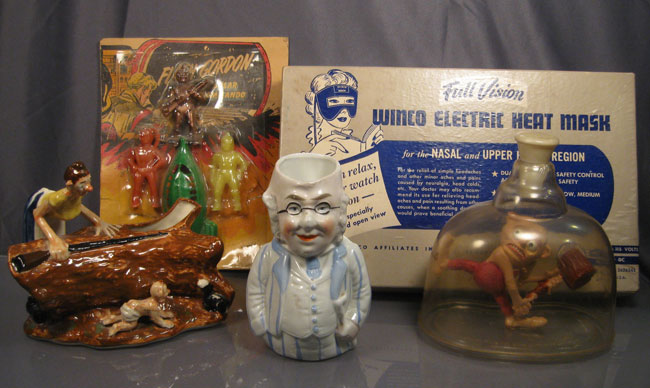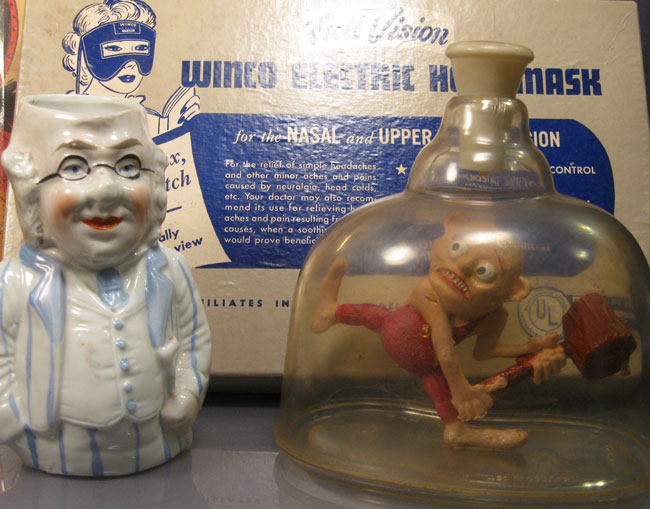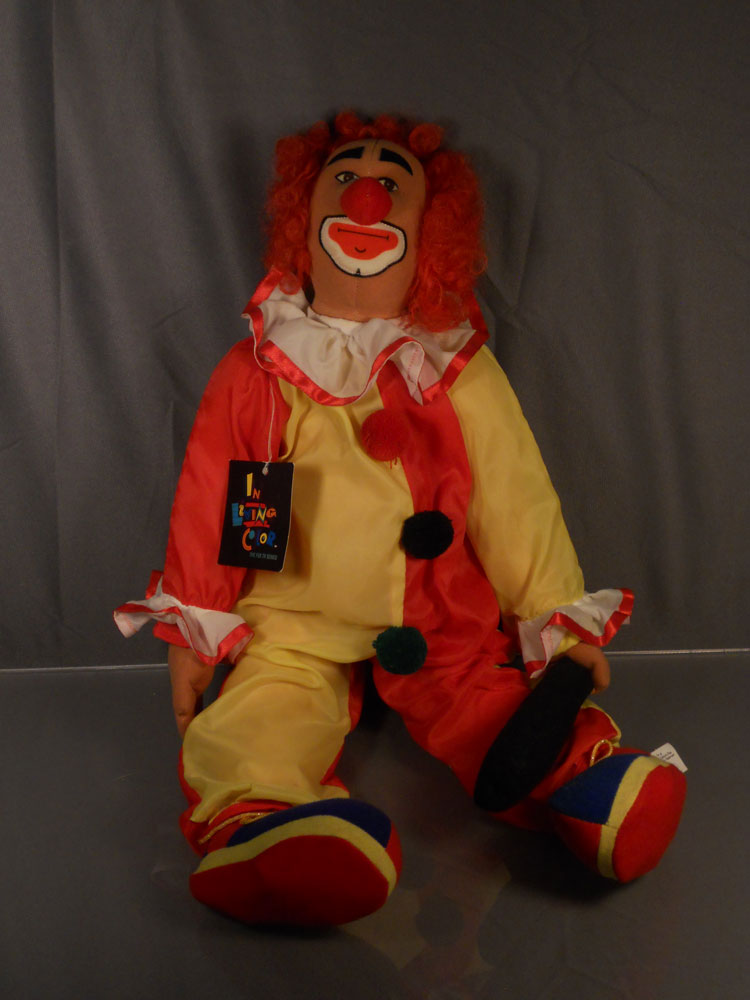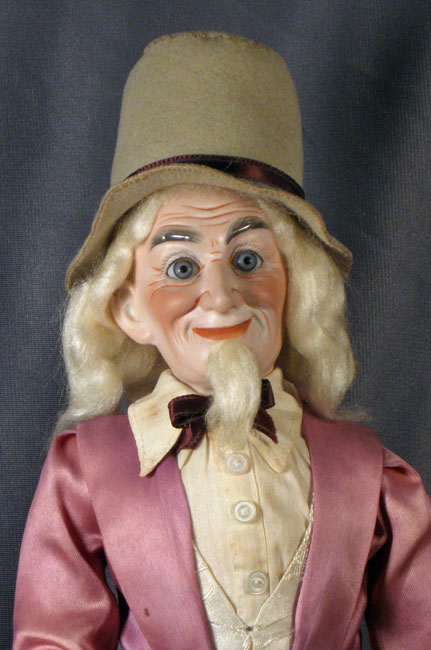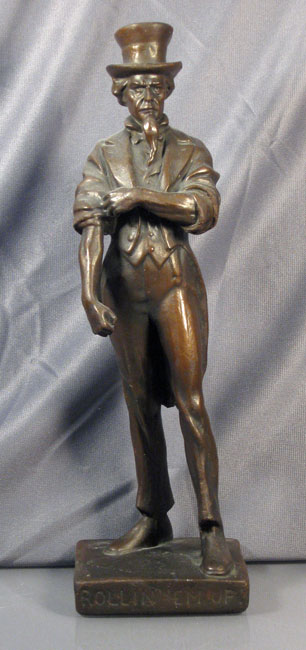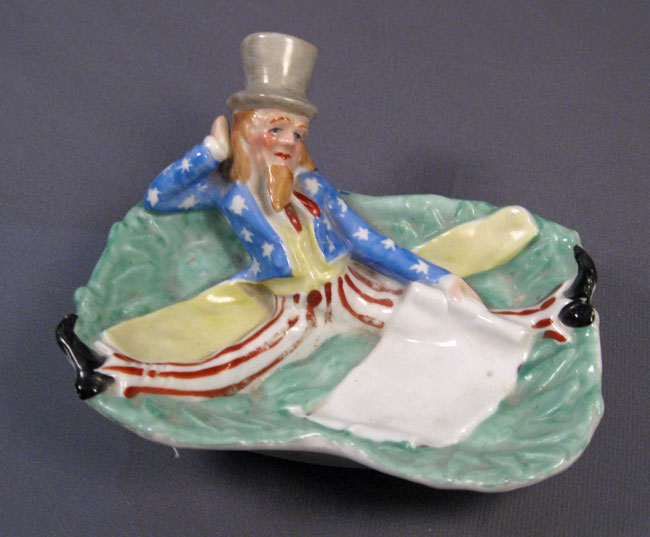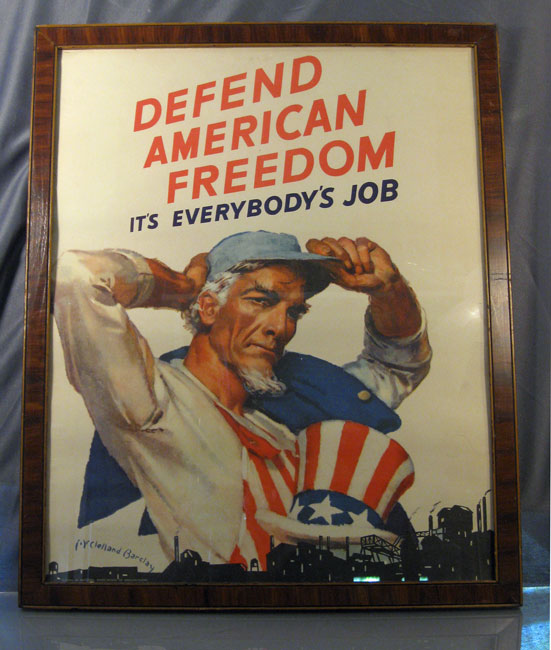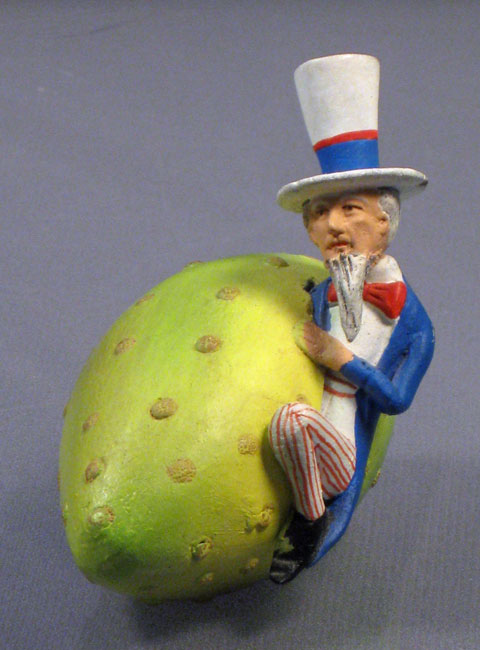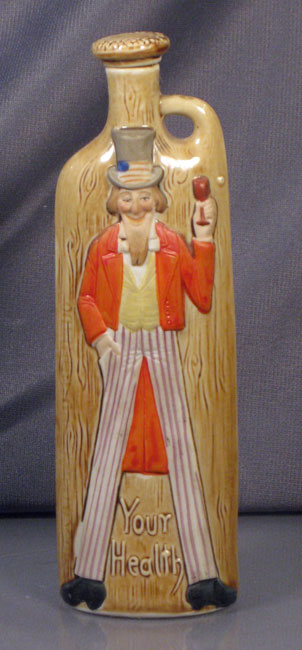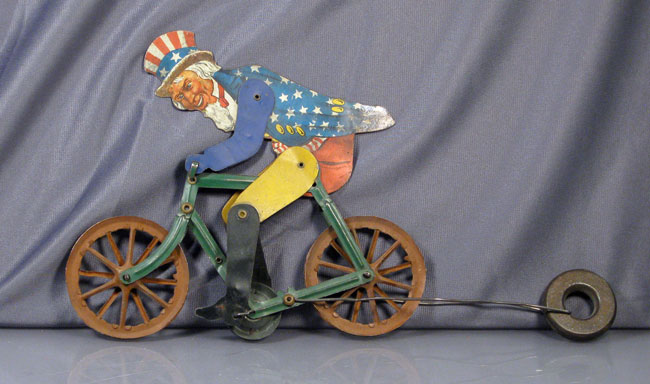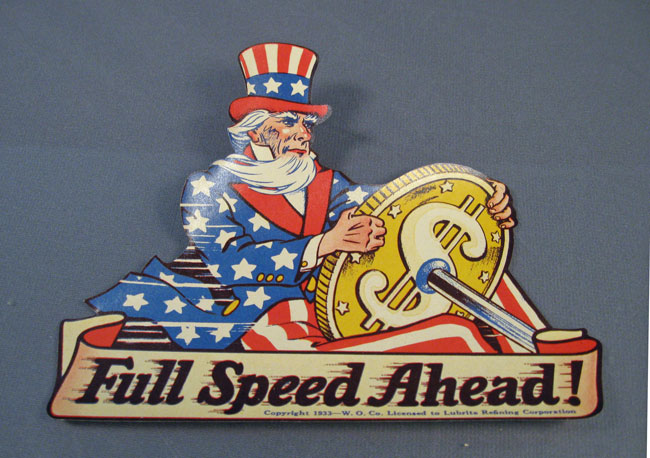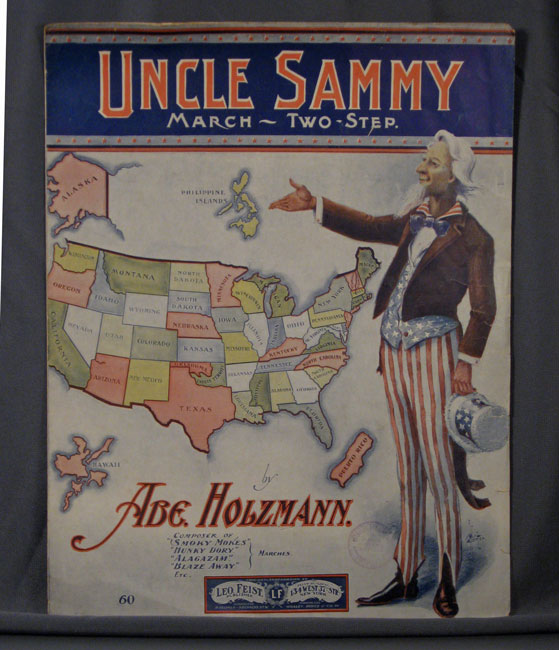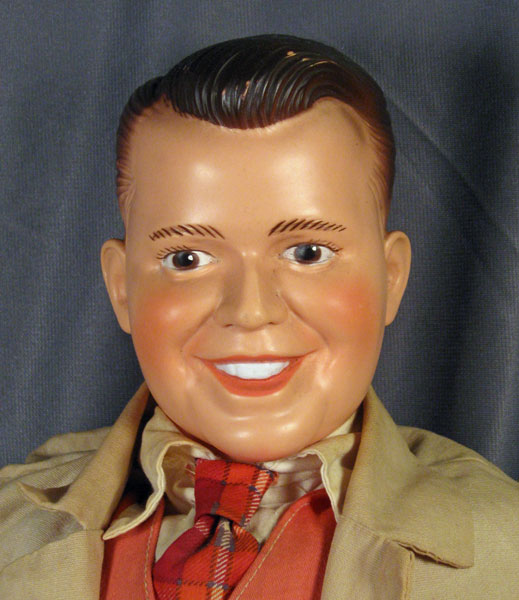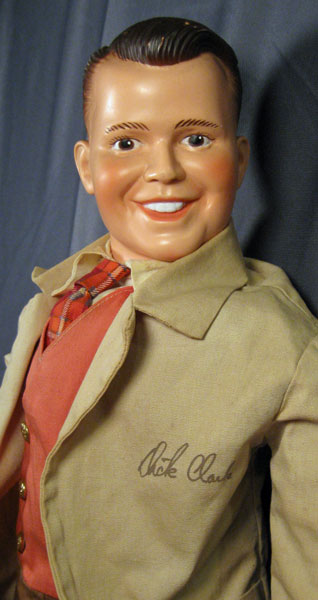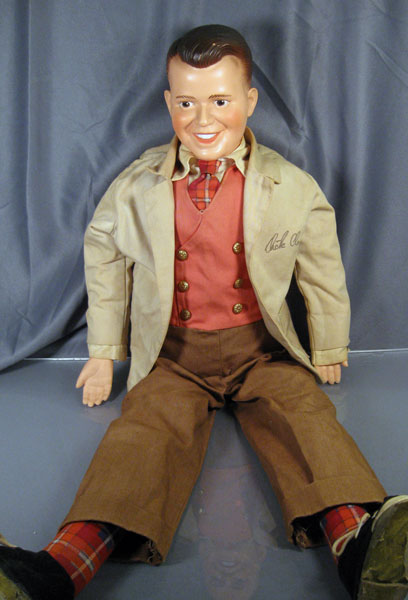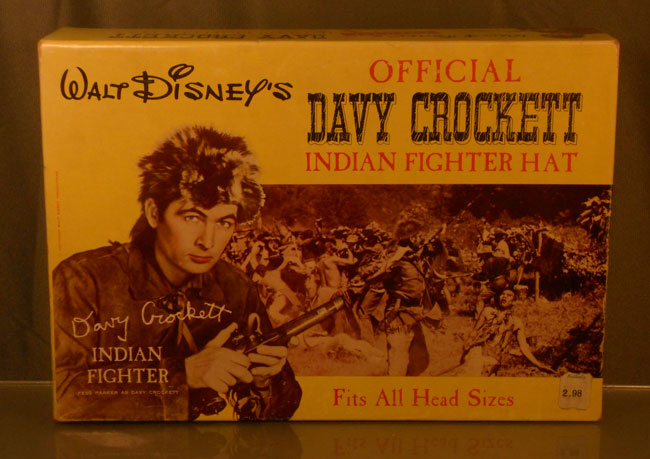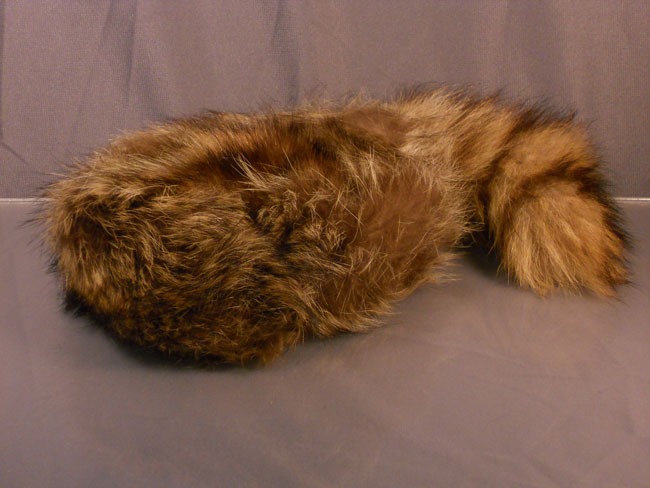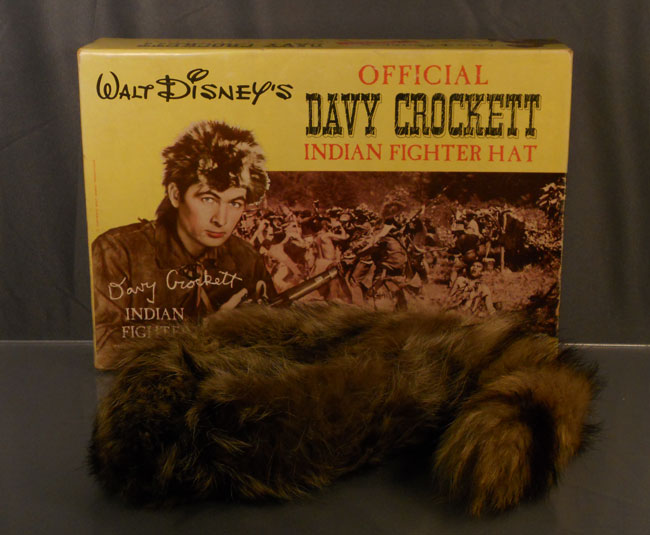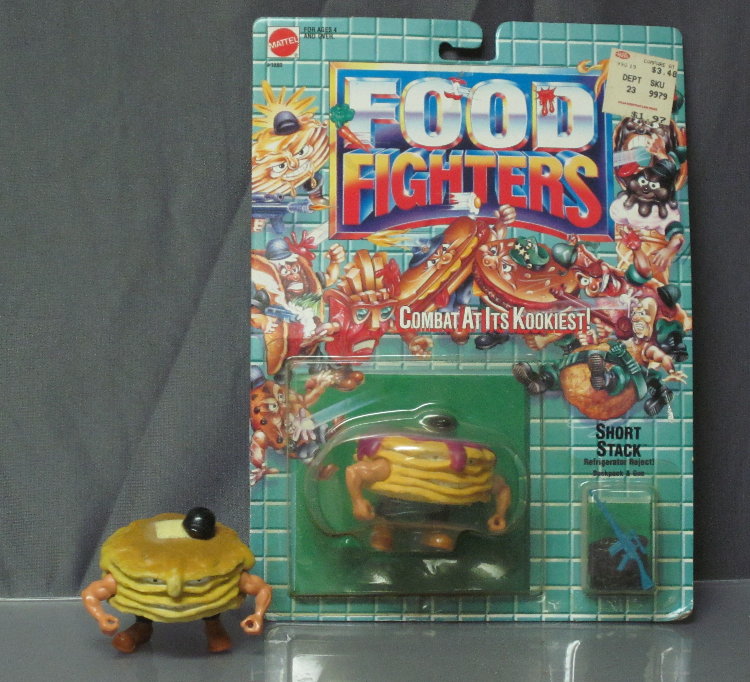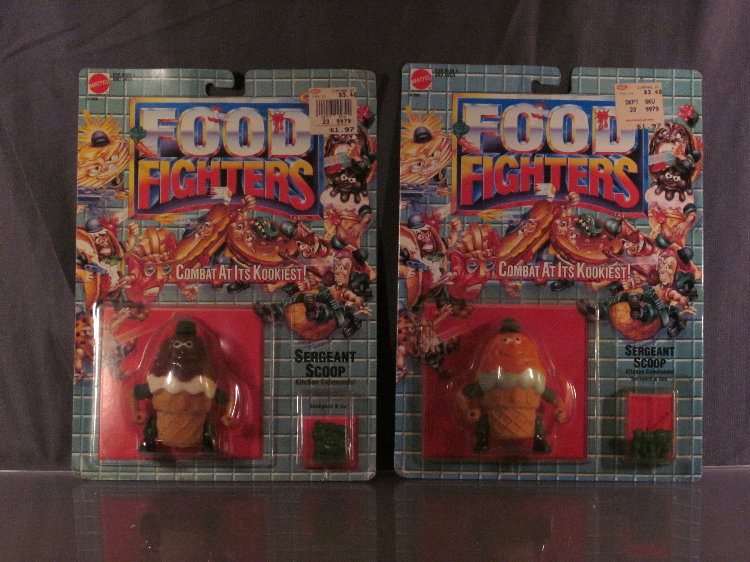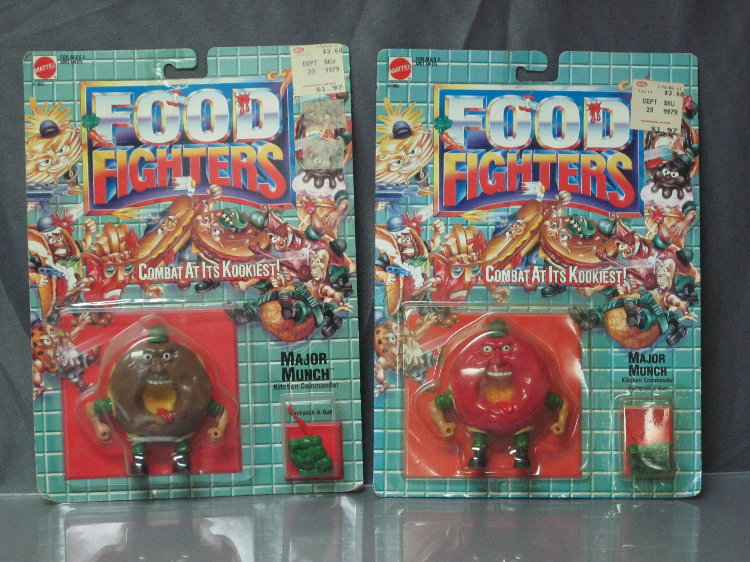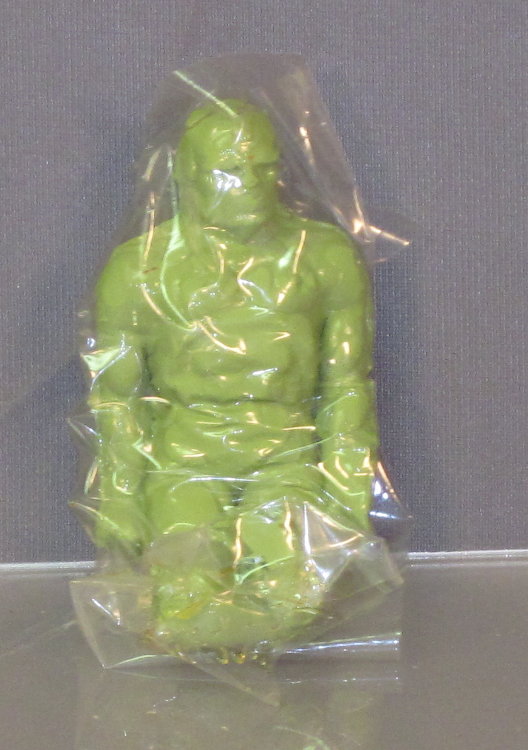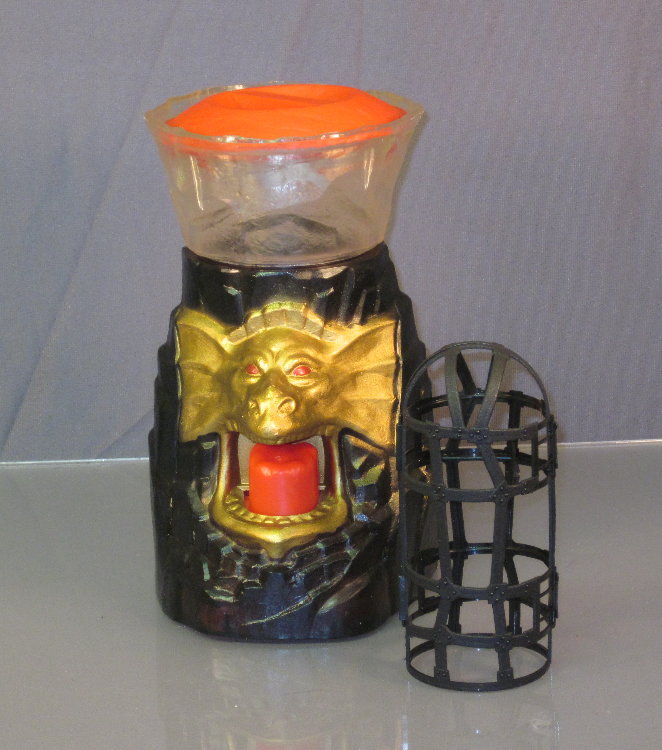It seems like ages since I have written an article for The Collector Gene, so I wanted to come back with one of my favorite pieces from my collection. I have been waiting to write about this one for a while. I can’t really explain why I like this thing so much; I just do. This is my Le Macabre skull.
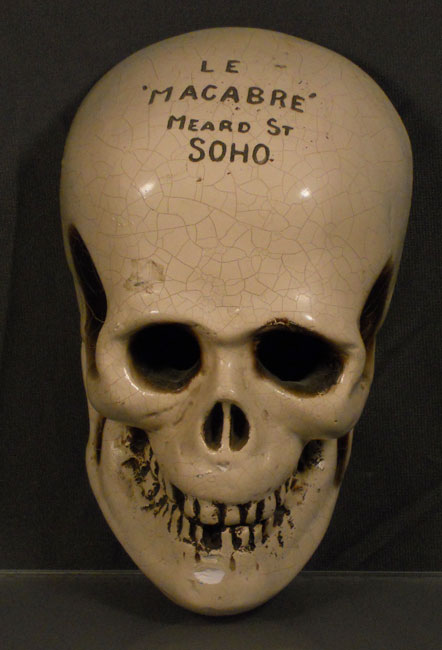
I purchased this skull a few years ago at a Pennsylvania flea market. I walked into the market with $52 in my wallet, which doesn’t usually go a long way at an antique flea market. So of course I found this piece in the first booth I went in, and it was priced at $50. Needless to say, I was frustrated. I really liked the skull, but buying it would wipe me out before I was even finished my first row of dealers. We were also going to check a few more flea markets and shops later that day, which made it even tougher to fathom spending all of my money immediately, especially on an object I knew nothing about.
At first I left it on the table and walked away figuring I would probably go back to buy it after I made sure that there was nothing I wanted more at the flea market. However, a few minutes later and about half way down the second row of the market, I realized that I didn’t want to risk it. I really liked the skull, and I knew I would be upset if someone else bought it while I was walking around. The more I thought about it, the more I wanted it. I cut back to the dealer’s booth again and bought it, and I have had no regrets about blowing all of my money in the first booth I went in at the flea market that day. There was nothing else I wanted more, and in my opinion this piece would have been hard to top. A lot of people like to collect what they know, but I find that the objects I tend to like best in my collection are the objects I didn’t know I needed until I saw them. Some of the fun of collecting, to me, is finding an object you love, and then finding out you love it even more as you learn more about it. The Le Macabre skull did that for me.
The Le Macabre skull is made out of plaster, with the name of its place of origin, Le Macabre, Meard Street SOHO, stamped into its forehead. It is just about life-sized, though it is stylized and kind of elongated if you look at the skull from its side. The back of the skull is flat and hollow, and the eye sockets are hollow as well. It has a little metal hook imbedded in the plaster so you can hang it on the wall. The skull is probably from the 1950’s, which is part of what made it appeal to me, and for some reason I like skulls, so it had double appeal. The damage to his chin was there when I bought him, and even though I could totally restore it myself, I haven’t done it yet. I don’t know why. Maybe sometimes I like to think that he received his battle scar in some really epic way and it is a part of his history. He is a very intriguing advertising piece, and the more I learn about him, the more I love him hanging on my wall.

One of the biggest mysteries with the Le Macabre skull is this: How did it end up in the United States? Le Macabre was a coffee and espresso bar in SOHO London. This I knew when I bought the skull because it is stamped on his forehead, and I got an original postcard from Le Macabre with it.
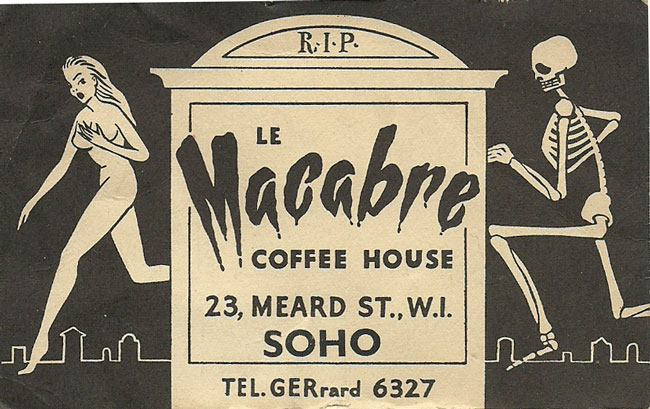
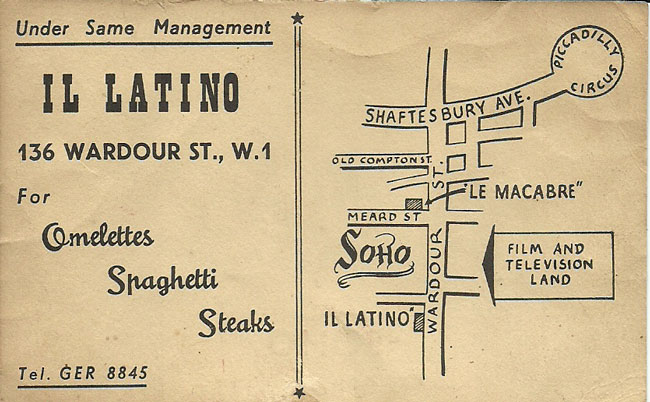
I love this postcard. The imagery is great, and it adds a sense of humor to the skull plaque. I have it framed and hanging under the plaque on my wall. None of this, however, explains why these two pieces crossed the pond and ended up in New Jersey, and the more I research Le Macabre, the more I still don’t understand how these two ended up here.
When I first went to research this piece on the internet back when I bought it, the only information I could find out at the time was that Le Macabre existed from the 1950’s through the 1970’s, and that it offered a place for London jazz musicians and rock musicians to perform. There was also some reference to Orson Wells hanging out at Le Macabre, which I thought was pretty cool. Le Macabre had coffin shaped tables and skeleton murals on the wall, but there was never any mention of skulls like mine hanging in the bar anywhere. I was happy to know that Le Macabre played an integral part in the early history of jazz and rock n roll in England, but there were no pictures to help me understand what part my skull played in the bar. Were there more than one? Was it for decoration or a souvenir? For several years I just assumed that I would never fully understand the skull plaque, but that was okay because I liked it, and I liked that it represented pre-British invasion rock and jazz in London.
It wasn’t until late last year that I decided to research my skull again, and a lot more information has surfaced on Le Macabre thanks to two British news reels, one from 1958 and one from 1959, that have since been posted to the internet.
The first newsreel I found in the internet was the 1958 newsreel called “It’s the Age of the Teenager”, and I couldn’t believe what I saw when I watched it. If you go to the 00.32 minute mark right in the beginning of the film and look behind the bartender’s head, you will see a skull just like mine hanging on the wall! Mystery solved! Well, sort of. If you keep watching through the rest of the “Le Macabre” section of the film, you will see several other skulls hanging up throughout the joint. Some are used over light fixtures, and others are just hanging on the wall as decoration. I still can’t believe that these films exist, and that through them I could finally learn in some capacity why my skull plaque exists. The rest of the film is an interesting look at British teenagers in the 1950’s. It doesn’t spend too much time in coffee bars outside of Le Macabre, but it is definitely worth watching and kind of funny by today’s standards. Follow this link to the website for Pathe to watch the filmstrip.
The 1959 strip is in color and called “Look at Life: Coffee Bar”, and it shows Le Macabre at about the 07.01 minute mark. If you look towards the ceiling in one of the early scenes, you might catch skulls like mine hanging up near the ceiling. They are covering light fixtures that will make the eyes glow when they are lit. The whole news reel is a rather interesting look into the rise of the coffee bar in London and its clientele and significance. It is fascinating and worth watching if you want to learn more about the “coffee craze”. Apparently there were dozens of coffee and espresso bars in SOHO in the 1950’s, but there were so many that it became difficult for them to thrive with all of the competition. The “coffee craze” in London was certainly not a point in history on my radar before buying the Le Macabre skull, but this is why I love buying pieces of history that I know very little about until I get them home to research them. You never know what you will find out. Look at Life: Coffee Bar
Of course, there are still a lot of things I do not know about this skull and about Le Macabre. I still don’t know if they sold these skulls as souvenirs or if my skull was salvaged when Le Macabre shut down in the 1970’s. Are there many other skull plaques still in existence out there? I have never seen another one, but then again, I am nowhere near London. If anyone out there has any more information about this skull or Le Macabre itself, please share it on the comments section of this site. I would love to know any information that I can get.
It is very rare to buy an object with very little information and to find out as much as I did from the Le Macabre skull plaque. Most of the time you aren’t that lucky, and you are left to speculate as to the purpose of an object. I certainly never could have dreamed that somewhere along the line someone, and in this case more than one person, would post video evidence of my find in its original context. When we first started this website almost a year ago, I was planning on writing about the Le Macabre skull. However, because I knew very little about it, I was just planning to post a picture and what little bit I knew in hopes that somewhere along the line a person who knew more about it would comment on the site and I would have an answer. Then the internet surprisingly answered a few of my questions for me. It has been a fun ride so far figuring out the origins of Le Macabre and the little piece of it I hang on my wall and look at every day, but I have a feeling there is still a lot to learn.
Article Update:
Hey everyone! This is the first time I have had the opportunity to update an article after gaining some valuable information on its subject matter from another passionate collector. Hopefully this will be a trend! Since posting my article about Le Macabre and my skull I was contacted by Del Fuller, another fan of Le Macabre who was actually fortunate enough to visit Le Macabre before it closed in the 70’s. He and his friend Keith Ryan have supplied me with the following images of other Le Macabre memorabilia and were generous enough to let me share it with the internet. Please enjoy!
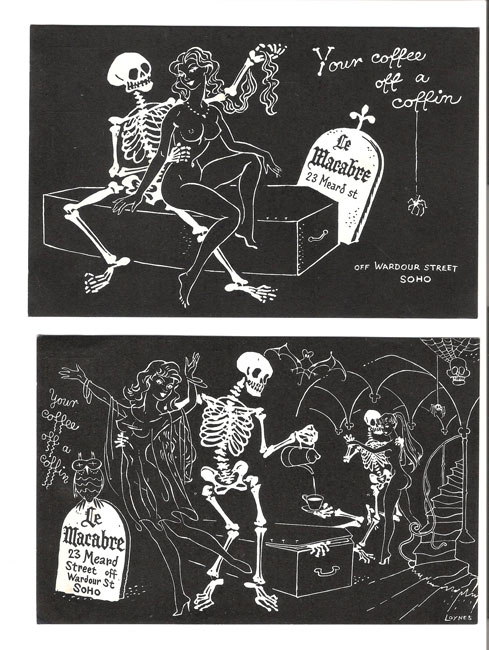 This is a different post card made to promote Le Macabre. Skeletons and naked ladies were kind of Le Macabre’s thing.
This is a different post card made to promote Le Macabre. Skeletons and naked ladies were kind of Le Macabre’s thing.
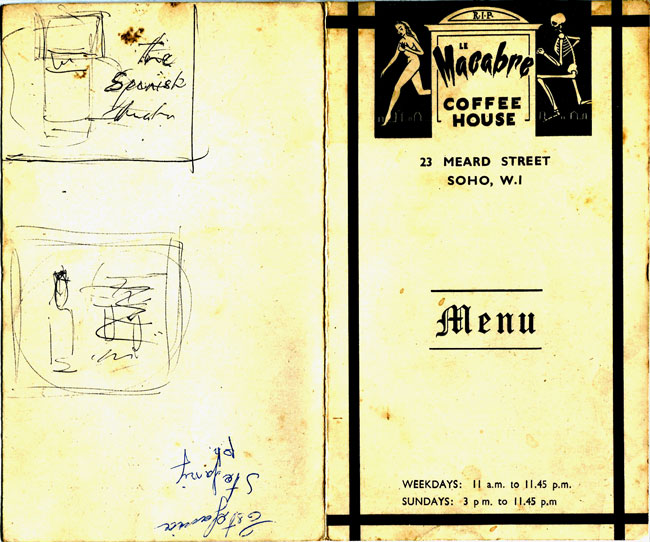
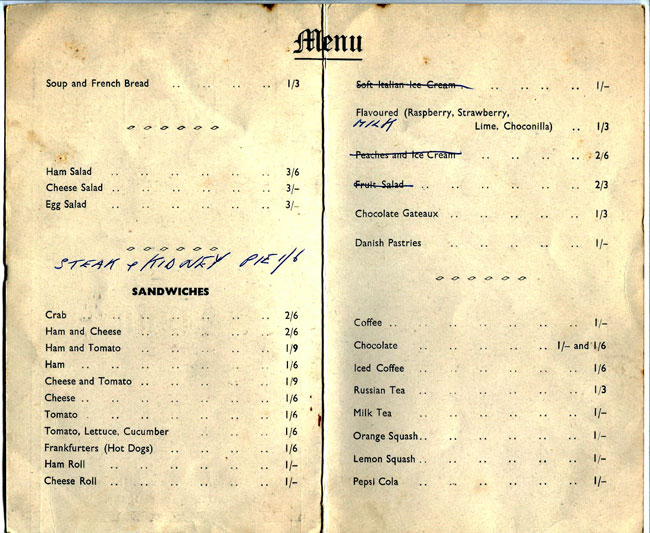 This is an original menu from Le Macabre. They used the same image from my postcard on the cover. It is kind of fascinating to see how they made changes to the menu by just crossing things off and adding other things in.
This is an original menu from Le Macabre. They used the same image from my postcard on the cover. It is kind of fascinating to see how they made changes to the menu by just crossing things off and adding other things in.
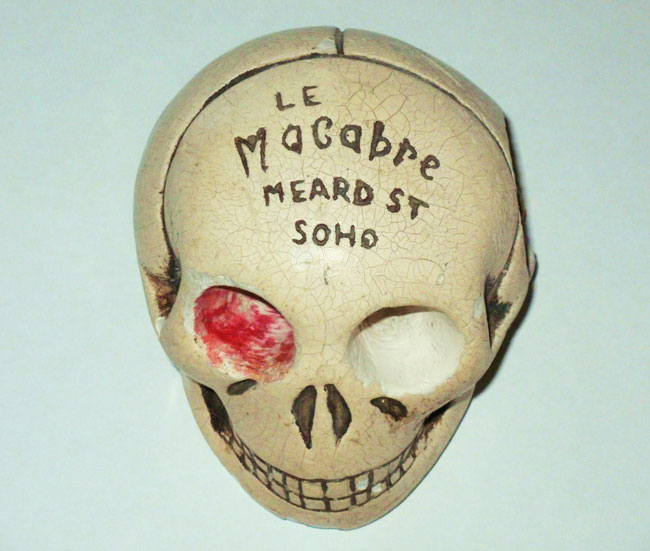
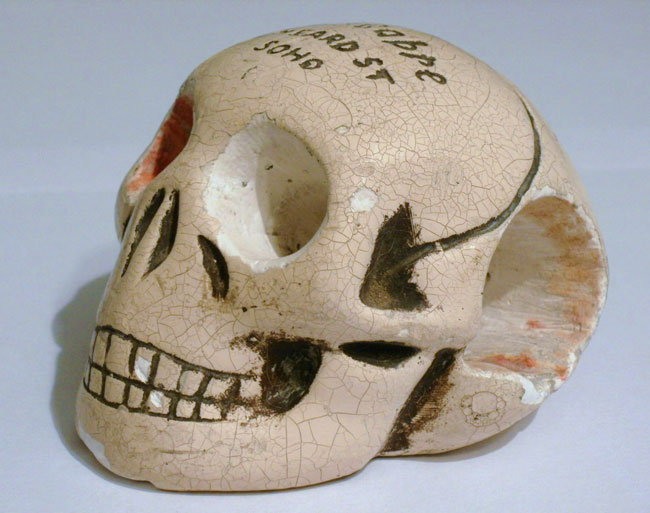 This is a smaller skull than mine measuring about 3″ by 2 1/4″. We aren’t quite sure of its practical purpose, but it was used on the tables at Le Macabre and has “Saturday 17th Jan 1959″ written in ink on the bottom.
This is a smaller skull than mine measuring about 3″ by 2 1/4″. We aren’t quite sure of its practical purpose, but it was used on the tables at Le Macabre and has “Saturday 17th Jan 1959″ written in ink on the bottom.
We still aren’t sure as to whether they sold Le Macabre skulls or if patrons just swiped them, making Del, Keith, and I lucky enough to own what we have. Either way, it is a fascinating place, and I am so grateful to learn from other collectors and fans about the objects I am passionate about.


